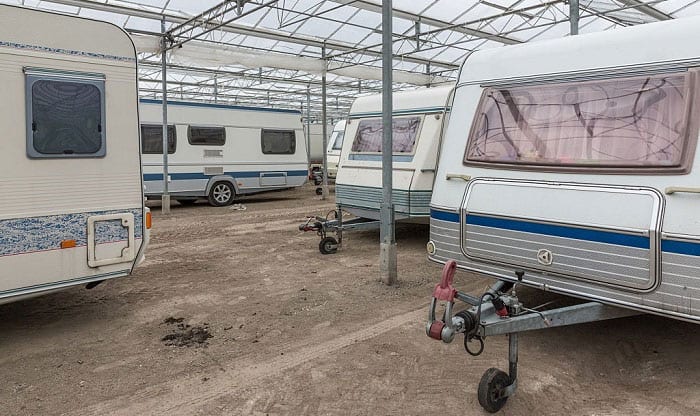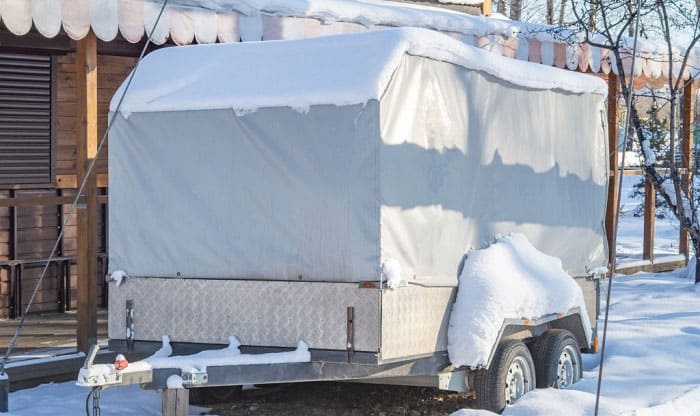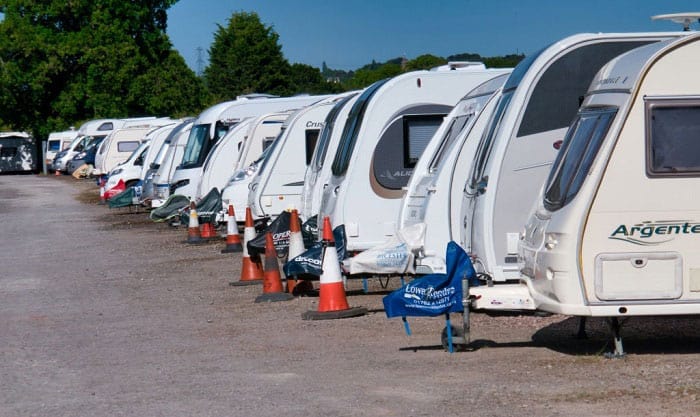Some rig owners do not consider their RVs as their permanent residences. If you are a seasonal camper, you may think about storing your RV when you do not need it. But how much does it cost to store an RV?
Trailer storage cost often depends on different factors, such as the facility’s location and the included features. But expect to pay an average of $131 per month for the motorhome storage cost.
Verifying the costs to store an RV will help you in planning your expenses. Keep reading to know more about RV storage overheads and other useful information about storing rigs.
Table of Contents
How Much Does RV Storage Cost Per Month?
The monthly RV storage cost is $131 on average. Outdoor storage options are available for rig owners who wish to take advantage of a reasonably less expensive choice than indoor selections.
Take note that outdoor RV storage prices are about $30 to $100 per month. Outdoor RV storage rates can still increase if places have extra amenities and features, or if the demand for that particular location is quite high.
Some of the features that can also increase camper storage cost are climate control and additional heating. If so, RV owners should expect to pay as high as $450 per month.
Finally, the size of the space rented will also be a vital factor in the RV storage fee. The bigger the space, the more money you’ll have to pay. Some spots can accommodate large campers, but fitting a fairly small motorhome or travel trailer in these locations will not be a cost-efficient solution.
Can You Store an RV in a Storage Unit?
You can store an RV in a storage unit, and you have indoor and outdoor options. Take note that the average cost to store an RV can depend on different elements, including the location and size of the storage facility.
Aside from the trailer storage cost, you should also consider other factors to ensure that you are making the correct choice. Some details that you need to ponder are:
1. Security
Indoor storage facilities generally have the upper hand in comparison with outdoor locations with regards to security. Many indoor locations are quite secure and offer features like alarms, deadbolts, and CCTVs.
Although outdoor RV storage is less secure than its indoor counterpart, some outside locations may offer features like security patrols or tall walls to secure perimeters.
2. Space
RV owners that worry about limited space for their rigs may choose outdoor storage facilities. Many choices are quite wide with little to no barriers between each rig. Think of these locations as giant parking lots for different RVs.
3. Climate
Constant exposure to inclement weather can harm your RV if you leave your rig unprotected. Therefore, it might be prudent to have your camper stay in an indoor facility if you live in an area with extreme climate conditions.
If you want to learn more about where to store your RV, watch the video below:
How Do You Store an RV When It’s Not in Use?
Proper storage can help prevent harm to your RV while the vehicle is in storage. In this section, you will learn about important tips to help maintain the visual and functional appeal of your rig.
1. Clean It First
Storing your RV while it is still filthy can make it more challenging to clean when you take it out of storage. Cleaning and disinfecting your rig can help prevent this problem.
Make sure to sanitize both the inside and outdoor areas of your rig. Also, clean your appliances and electronics using the correct products. Furthermore, ensure that your RV’s vents are spotless as these locations can become homes for pests if left unchecked.
2. Maintain Proper Air Flow
Some RV owners might think that shutting their rigs’ doors and windows will keep the vehicles from accumulating dirt. Although the idea is sound, leftover dust, dirt, and other filthy particulates can make the RV smell foul.
Also, molds can grow in the vehicle if moisture manages to creep its way into your rig. You can avoid mold infesting your camping vehicle by opening the doors and/or windows slightly during storage.
You may also close these openings but keep the vents open. If so, invest in a good vent cover with a reliable filter to ensure dirty substances do not enter your vehicle.
3. Drain The Tanks
The black and gray water tanks in RVs can harbor moisture. In turn, these locations can become breeding grounds for mold, mildew, and moisture-loving pests.
Drain all of your RV’s water tanks before putting the vehicle in storage. Also, do not forget to drain the fresh water tank. Make sure that these tanks are completely dry before storing your rig.
4. Winterize
Failure to winterize your RV before storing it for the winter can increase the risks of cold damage. Aside from dumping the water from your vehicle’s tanks, winterizing also means reducing the risks of pests taking shelter in your rig away from the cold.
Protecting your camper or motorhome from potential winter damage also means securing the vehicle’s appliances and electronics. In particular, you should winterize the RV’s battery since the cold may discharge it faster than usual.
Check out the guide below to learn more about how to winterize an RV’s plumbing system:
Do RV Covers Cause Mold?
Adding a cover to your RV during storage can be an ideal solution to help protect the vehicle from possible weather damage. But take note that some RV covers, particularly the low-quality options, may not have water-resisting features.
You can save some money if you use fairly inexpensive covers, but you will put your rig at risk of contracting moisture-related issues, particularly mold and mildew growth.
Aim to install high-quality RV covers with moisture-wicking characteristics. For instance, some covers take advantage of well-ventilated materials. Certain options may also have built-in vents to ensure proper air circulation in the rig.
Other factors to consider when buying an RV cover are:
- Security: Covers with elastic cords and non-scratch grommets help ensure that the product will stay in place in strong winds.
- Size: Make sure that the material has reasonably large dimensions to encase the entire vehicle.
- Price: Although it might be prudent to opt for expensive and high-quality covers, you should still consider the product’s price to avoid overspending.
Conclusion
Now that you are at the end of this post, you should now know the answer to the question, ‘how much does it cost to store an RV?’
In summary, prepare to spend about $131 per month on RV storage costs and even more if you want to avail yourself of premium features like indoor heating. Still, you may save money on RV storage solutions if you make sure that your rig is properly secure in your home.
Some of the tips you can follow to ensure proper RV storage are:
- Clean and sanitize the vehicle
- Observe proper airflow
- Drain the water tanks
- Winterize the rig

Hi, I am Joseph. Carpe diem! Seize the day! That’s always been my life motto. If you haven’t seen some of the most beautiful places in the country, you are missing out on incredible adventures.




